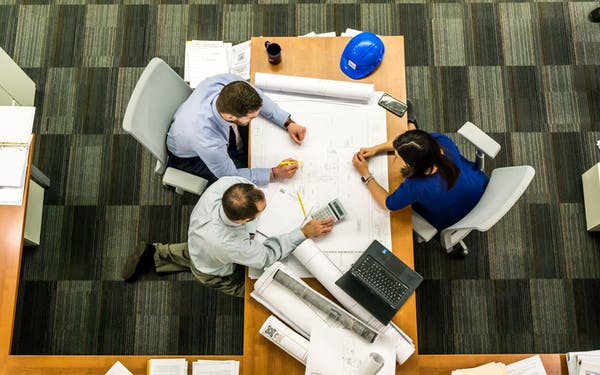When thinking about the construction sector, the first thing that crosses anyone’s mind is probably large infrastructure projects or at least the always-relevant residential sector. Commercial architecture that deals with buildings specifically suited to utilitarian business or commercial purposes always seem to take a back seat.
And yet, back in 2018, commercial architecture made as much as 18% of all active building projects. Now that the global pandemic has finally settled and people are looking for more retail but also medical services, this corner of the construction industry is going to experience yet another massive surge.
Let us take a look then at a couple of suggestions that male good commercial building practices and ensure the success of these projects.

Consider the building’s purpose
The finished product should be able to fulfill its core purpose and ensure users have an opportunity to freely interact with the object in an intended manner. This may sound natural but, you would be surprised just how many projects fail to deliver desired results due to simple factors like corridor or storage space, a number of available departments, collaborative shortcomings, and even a lack of proper lighting. Before engaging in more specific design activities be sure to have a very clear understanding of the requirement at this most basic level.
Take the users’ perspective
When constructing commercial buildings, architects usually take a bird’s eye view of the matter and fail to consider how the end users are going to interact with the building. So, put yourself in their shoes and imagine interacting with the object on all levels. For instance, if you are building a hospital in Australia, research what type of vehicles people drive Down There, how often they use public transport, etc. When you finish with this consideration move inside the building and give similar treatment to other departments as well.

Take into account local supply
The construction projects need to be informed by the local resources and infrastructure. Failing to take these factors into consideration in the early stages of development and working around them will prove to be much more beneficial than making compromises later on. So, if we once again take Australia as an example, before you start working on local projects check, for instance, structural steel fabricators in Sydney. Small considerations like this one can save you a lot of trouble later and make projects more financially sustainable.
Go green and sustainable
Over the last couple of decades, sustainability quickly climbed to the very top of the construction sector priorities. That is why your future commercial construction projects, aside from meeting the requirements we have described above, need to take into account the present-day environmental and sustainability standards. This problem is most easily taken care of with the use of the latest-generation BIM (Building Information Modeling) platforms that allow you to observe your pending projects from several perspectives, sustainability included.
Think of the maintenance and the energy efficiency
Both these things will have a tremendous impact on the overall success of your future project. We decided to put them together since they are very closely related and the energy efficiency ultimately depends on how well the building is maintained. However, the foundations for these duties need to be taken into account very early in the project development and the following activities need to be performed around these requirements. So, keep in mind that everything that is put together will need to be, eventually, disassembled and replaced.
Set up contingencies
Last but not least, we would like to remind you that even the most meticulously planned projects leave too much room for something to go wrong. Commercial architecture projects are more than prone to such deficiencies. So, try to anticipate these problems and set up as many contingencies as you can. The permits and licenses should be obtained as soon as you pen down the first draft of the project. Your budget should be very flexible and add an extra five to fifteen percent for unexpected costs. The options you have on the table are inexhaustible.
We hope these couple of suggestions gave you a general idea about the strategies you can use to make your future commercial architecture project more efficient, streamlined, and sustainable. All the relevant industry signs indicate that this sector is going to experience a great surge in the following year. The only way you will be able to tap into this trend is to make sure your projects are competitive and deliver the necessary level of quality. Now, you know where to start.
